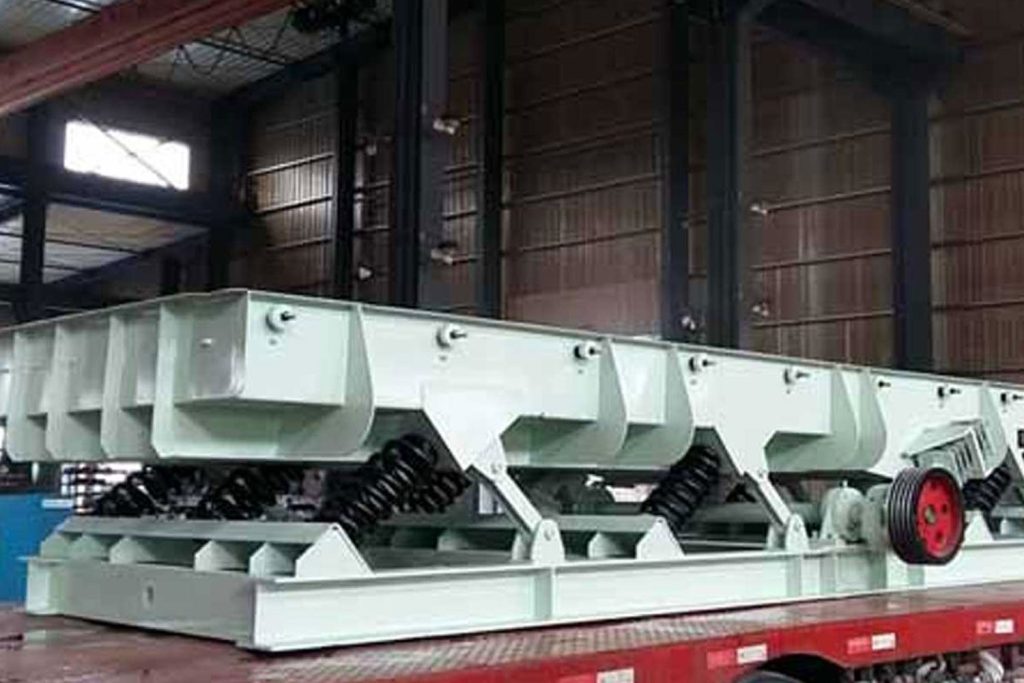There are a variety of options for plants to consider when selecting a conveyor for their operation. Typically, selecting the perfect conveyor comes down to the type of product that needs to be moved and the space in which the plant operates.
6 Advantages of Vibrating Conveyors
The following are the benefits of vibratory conveyors over other types of conveyor material handling systems.
- Efficient Material Transportation: The vibrating conveyors can be designed according to the required material handling capacity. Based on the type of goods to be transported, the capacity of the conveyor is decided. These conveyors are often enclosed to prevent leakage of material, therefore, the material transportation efficiency of these conveyors is higher compared to other conveyor types.
- Controlled Feed Rate: Material compaction is done based on compact feeding requirements. The operator can control the feed rate according to the specific material compacting capacity of the conveyor belt. The vibrators or mechanical shakers can be installed for compacting or spreading the material.
- Less Power Consumption: The vibrating conveyors consume comparatively lesser horsepower since most of the conveyor and material movement is triggered by the mechanical shakers.
- Material Separation: Grid or mesh-type vibratory conveyors are available that can perform material separation based on material sizes. Multigrid designs of vibratory conveyors act as conveyor filtration systems that separate small and large powdered material during the transportation itself. This reduces the need for separate filters at the receiving end.
- Quite an Operation: Although the shakers are attached to the conveyors, still, the vibratory sound caused in these conveyors is about 60 to 70dB, which is too low.
- Acts as Vibratory Feeder: Due to material compacting capabilities, these conveyors are also used as feeders for powdered or crushed material.
3 important factors for choosing a vibrating conveyor
Choosing the right conveyor system can be a difficult task. Making the wrong decision could cost you in terms of money, time, and efficiency.
Load capacity & pieces per minute
Understand what the conveyor will move, how much of it must be moved, and at what speed to specify the desired load capacity and pieces per minute. These values will give your supplier a good idea of the general size, shape, and duty rating of the right conveyor. If you are unsure of these values, your supplier can help determine the right capacity and speed for your given application.
Trough length and vibrational frequency
Determine the span that the aggregate must traverse, how wide it should be, and how much vibration it will take to move the material. For example, if boulders are being conveyed a long distance, it will naturally require a wider trough and a larger drive. These ideas will further inform what kind of vibrating conveyor will be best suited and can determine the right drive and power requirements needed for your project.
Control & special considerations
These conveyors are typically low maintenance and passive, but control can be added if these conveyors will be a part of a larger control system. If control is not needed, there are many passive options that are proven to be effective. Also, determine any special requirements such as hazard protection, containment/sterile components, and/or foundational damping. These considerations, along with any others that are important, should be given to your supplier to help them help you find the best options.
4 types of powders fit for vibrating conveyors

Every powder processor has a unique production process, often requiring specific types of equipment to efficiently, safely, and sanitarily transport powder materials from start to finish.
For those processors handling fine types of powder material, delicacy is important to limit degradation that could impact the quality of the final product. In these cases, vibrating conveyors are typically the type of mechanical conveyors processors choose.
Vibrating conveyors are used to convey products horizontally at a controlled rate in either an open or enclosed environment. The conveying action is gentle, quiet, and at low velocity. With none of the moving parts coming in contact with the powder, vibrating conveyors result in little to no degradation– especially in enclosed models.
Dairy Powders
The dairy industry is highly regulated, with sanitation and prevention of cross-contamination being key. As a result, vibrating conveyors are perfect for moving dairy powders since there are no moving parts within the conveyor. No moving parts greatly decrease the number of objects that the powders come into contact with, limiting the chances for contamination.
Infant Formula
Maintaining the highest level of sanitation with the least amount of product degradation is imperative when it comes to infant formula processing.
The controlled action and lack of moving parts make the vibrating conveyor an excellent fit for infant formula.
Bulk Materials (grains, sugar, salt, etc.)
Bulk materials must be kept intact prior to tempering, grinding, mixing, or blending to avoid degradation, which means transportation and conveying must be done delicately. The gentle nature of vibrating conveyors makes a great match with plants that work with grains, sugar, salt, and other bulk materials.
Pet Food
When it comes to processing pet food, there is a myriad of regulations and recommendations to abide by. A vibrating conveyor makes this an easier task with its enclosed design. Pet food processors deal in large bulk quantities, and the density of the product is just right for the vibrating conveyor to handle the job.